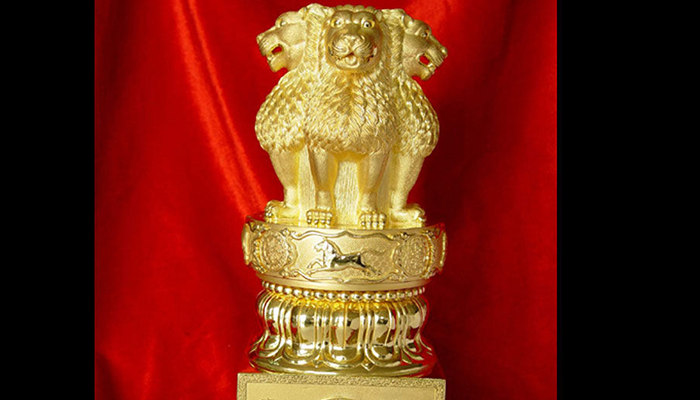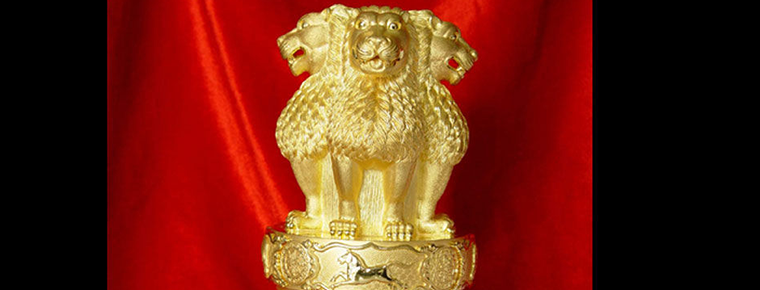Gold and Silver Fine Craft
Gold and Silver Fine Craft
Gold and silver fine craftsmanship, Huangpu District of Shanghai, Nanjing City of Jiangsu, Jiangdu traditional handicraft, one of the national intangible cultural heritage.
Gold and silver fine workmanship requires a series of processes, such as drawing, sculpture, turning over, assembling, welding, gluing, painting, surface treatment, cloisonne, mosaic and assembly, to produce finished products.
On June 7, 2008, gold and silver fine craftsmanship was approved by the State Council of the People's Republic of China to be included in the second batch of national intangible cultural heritage list, the project number is_-117.
historical origin
Gold and silver fine craftsmanship originated in the Han Dynasty, flourished in the Tang and Song Dynasties, and flourished in the Ming and Qing Dynasties.
According to the "Grand View of National Treasure", there are "Golden Seal of Guangling King" and more than ten pieces of small gold ornaments made in the tomb of Liu Jing, Guangling King of the Eastern Han Dynasty in Hangjiang, Jiangsu Province. From these products, we can see that the gold and silver fine workmanship such as hammering, stranding, reeling, frying beads, welding, mosaic and so on was very mature at that time.
The Tang Dynasty was a flourishing period of Chinese gold and silver production, and Yangzhou at that time had become the trading center of gold and silver ware. This can be seen from Du Mu's poems such as "Golden Row Carved, Luhuan Picked up Cui Lai" in "Three Poems of Yangzhou". In the New Tang Book, there are special records of handicraft industries such as gold and silver making in Yangzhou.
In the Ming and Qing dynasties, the traditional gold and silver jewelry crafts in Jiangdu developed rapidly. During the Republic of China, gold and silver jewelry prevailed in Jiangdu. There were more than 30 silver stores. They mainly made various kinds of gold and silver jewelry, including rings, necklaces, long-life locks, ear pliers, bracelets, etc. They also made high-grade jewelry inlaid with pearls, agate and emerald.
In 1971, the Ministry of Light Industry of China deployed to resume the development of export jewelry production. In 1972, Jiangdu set up a metalworking factory. 32 gold and silver craftsmen were invited from Shanghai, together with dozens of local craftsmen in Yangzhou, which opened a new chapter in the inheritance of fine gold and silver industry in Jiangdu.
Process characteristics
Gold and silver fine works mainly include gold and silver jewelry, gold and silver ornaments, gold and silver utensils and gold and silver ornaments. The process includes design drawing, proportioning and pressing, sculpture moulding, group welding and sculpture, surface treatment (including sand blasting, whitening and blueing, brushing, blackening, silver plating, gold plating, polishing cleaning, drying), inlaying, assembling, mounting, base, packaging, etc. The unique techniques are potted flower and polishing. Its main production tools are smelting tools, batching tools, carving tools, welding tools, plastic tools, polishing tools, blue burning tools and related accessories.
The fine-working technology of gold and silver inherits the ancient Chinese gold and silver jewelry production technology, the ancient crucible melting technology, carving and carving technology and polishing technology of Yangzhou bronze mirror. On the whole, the works present a unique style of "elegance, exquisiteness, elegance and vulgarity, rigidity and softness", with fine decoration and exquisite patterns.
Gold and silver fine workmanship is developed from China's long history of metal technology, which accumulates China's advanced cultural ideas and excellent technology, and also forms its own unique technological characteristics. After a long period of artistic practice, craftsmen gradually formed a precise, accurate and beautiful style in the inheritance of gold and silver fine workmanship.
"Fine" mainly refers to fine, which is also the main feature of gold and silver fine workmanship. If it does not reach a certain degree of precision, fine workmanship can not be called fine workmanship. Some fine workmanship pieces are as thin as cicada wings, decorative carvings are as fine as hair, and the production is extremely delicate and meticulous, which is incomparable with other crafts. The fineness of the decoration process depends on the artist's superb craftsmanship on the one hand, and on the other hand, the exquisite fine tools. In the sculpture pattern of the chips, most of the patterns are difficult to see with the naked eye, and can only be seen with the help of a magnifying glass.
"Accuracy" mainly refers to the accuracy of the shape of the work, the decorative structure in place, and the lifelike manner. In Fine-Work production, the accuracy of the structure of the work is achieved by the accumulation of many years'experience of craftsmen, rather than by careful calculation of the database. For example, "Hualong Tower" is a fine ornament, each layer of the tower is an octahedron, and the octahedron is welded from eight plates. If the welding position of one plate is inaccurate in the manufacturing process, the whole tower layer will not achieve the desired effect.
"Beauty" mainly refers to the handicraft who can effectively grasp the material in the production, and can stimulate the inherent simplicity and tenacity of metal materials, reflecting the idea of "artistic and skillful material" in handicraft. In the sculpture of articles, we should follow the principles of complete form, similarity between static and dynamic, pun in meaning, exquisite and diverse creation, and follow the rules of clear primary and secondary, full and orderly in handling methods.
Inheritance and protection
Inheritance value
The fine arts of gold and silver are an important part of traditional national culture. They are not only precious scientific heritage, but also the carrier of technological genes. Their works take into account both technical and artistic qualities, and are important intangible cultural heritage.
The fine arts of gold and silver have a long history. In the process of inheritance, they have historicity and modernity with the changes of the times. They are the manifestation of modern life culture. They also indirectly reflect the development of culture and times, the needs and features of society. Their themes, decorations and shapes reflect the aesthetic taste and life aspirations of the times.
Traditional fine arts of gold and silver are closely related to people's daily life, involving all aspects of clothing, food, shelter and daily necessities, such as handicraft, jewelry, daily necessities, etc. Users have dignitaries, but also ordinary people. Works from craft decoration to silver pot to jewelry, both practical and artistic values, to meet cultural and spiritual needs.
Inheriting characters
Wang Dianxiang, male, born in October 1939, is the representative successor of the third batch of state-level intangible cultural heritage projects. Nanjing, Jiangsu Province, declares the project: gold and silver fine craftsmanship.
Zhang Xinyi, male, born on February 8, 1958, is the representative successor of the fourth batch of state-level intangible cultural heritage projects. He declared the project in Huangpu District, Shanghai: gold and silver fine craftsmanship.
Fang Xuebin, male, born in January 1956, is the representative successor of the fifth batch of state-level intangible cultural heritage projects. Jiangdu City, Jiangsu Province, declares the project: Fine-Work production skills of gold and silver.
protective measures
In March 2007, the gold and silver fine crafts were listed in the first batch of intangible cultural heritage list of Jiangsu Province by Jiangsu Provincial People's Government.
In June 2008, the fine-working techniques of gold and silver were listed in the second batch of national intangible cultural heritage list by the State Council of the People's Republic of China.
In 2009, Fang Xuebin, the representative inheritor of the national intangible cultural heritage project, established Fangyuan Metal Art Studio to create metal crafts and protect the inheritance of gold and silver fine workers.
In September 2013, Nanjing Baoqing Jewelry Company was recognized as the city-level gold and silver Fine-Work production technology inheritance base by Nanjing Wenguang New Bureau.
On May 24, 2018, the fine-working techniques of gold and silver were listed by the Ministry of Culture of the People's Republic of China in the first batch of national traditional crafts revitalization catalogue.
social influence
Important exhibition
On October 29, 2015, the 16th China Arts and Crafts Master Works and International Art Exhibition, co-sponsored by Yangzhou Municipal Government, China Arts and Crafts Association and China Arts and Crafts (Group) Company, opened in Yangzhou, in which the gold and silver fine work "Dragon Boat of the Great Sui Dynasty" was displayed.


-
1.Zhongshan Park
Zhongshan Park is located in the south of the Forbidden City (Palace Museum) in the center of Beijing, west of Tian'anmen, and separated from the Palace Museum.
Time 2018-12-22 -
2.jingyuetan national forest park
Jingyuetan, National AAAAA Class Tourist Scenic Spot, National Scenic Spot, National Forest Park, National Civilized Scenic Spot Demonstration Site, National Water Conservancy Scenic Spot, National Na
Time 2018-12-26 -
3.Tianma Island Tourist Area
Shandong Tianma Island Tourist Area is composed of Ma Qi Mountain and Tianhu Lake. It is located 16 kilometers northeast of Junnan County Town, Linyi City.
Time 2019-02-21 -
4.Construction Skills of Russian Nationality Residences
Historically, Tacheng once had the reputation of "Oriental Moscow", which is by no means a historical accident. It has a close relationship with the border trade in the past 150 years
Time 2019-04-28 -
5.Enshi dulcimer
Enshi Yangqin, also known as Enshi Silk String, was made up of Hunan Opera, Southern Opera, Chu Tune, folk minor, instrumental music licensing scholars and
Time 2019-04-28 -
6.Buddhist music
Buddhist music, the music used by Chinese Buddhist temples and believers in religious ceremonies. Buddhism believes that music has the function of "offering" and "praising Buddha".
Time 2019-04-29 -
7.Guan Suo Opera
Guansuo Opera is a kind of local opera, which belongs to the ancient Nuo Opera. It is only found in Xiaotun Village, Yangzong Town, Chengjiang County, Yunnan Province.
Time 2019-05-01 -
8.Drum dance
Hani rhythm and drum dance is a kind of sacrificial dance of Hani people on the traditional festival "Onmatu". The dance is vigorous and bold, vigorous, simple and free, showing the same per
Time 2019-05-23 -
9.Shulaibao
Shulaibao, a traditional Chinese folk art. Popular in northern China, the source is a means for beggars to ask for money. One or two people sing. Beat with a bamboo board or with a copper bell attache
Time 2019-06-15 -
10.Ring Dance of Yi Nationality
Ling Dance of the Yi Nationality, to be known as foot-jumping, is called "Qi He Zhe" in the Yi language, which means the spiritual farewell dance. It is a traditional folk dance performed an
Time 2019-07-12 -
11.Beijing Technology and Business University
Beijing University of Industry and Commerce is a multi-disciplinary university in Beijing. It was approved by the Ministry of Education in June 1999 by the merger of Beijing Institute of Light Industr
Time 2019-09-06 -
12.Animal resources in Nanchong
There are many animals in the subtropical farmland of Nanchong, and the number of other types of animals is less. Hundreds of wild animal resources are still preserved in the city. Among the rare animals, there are two kinds of national first class protected species
Time 2020-12-17